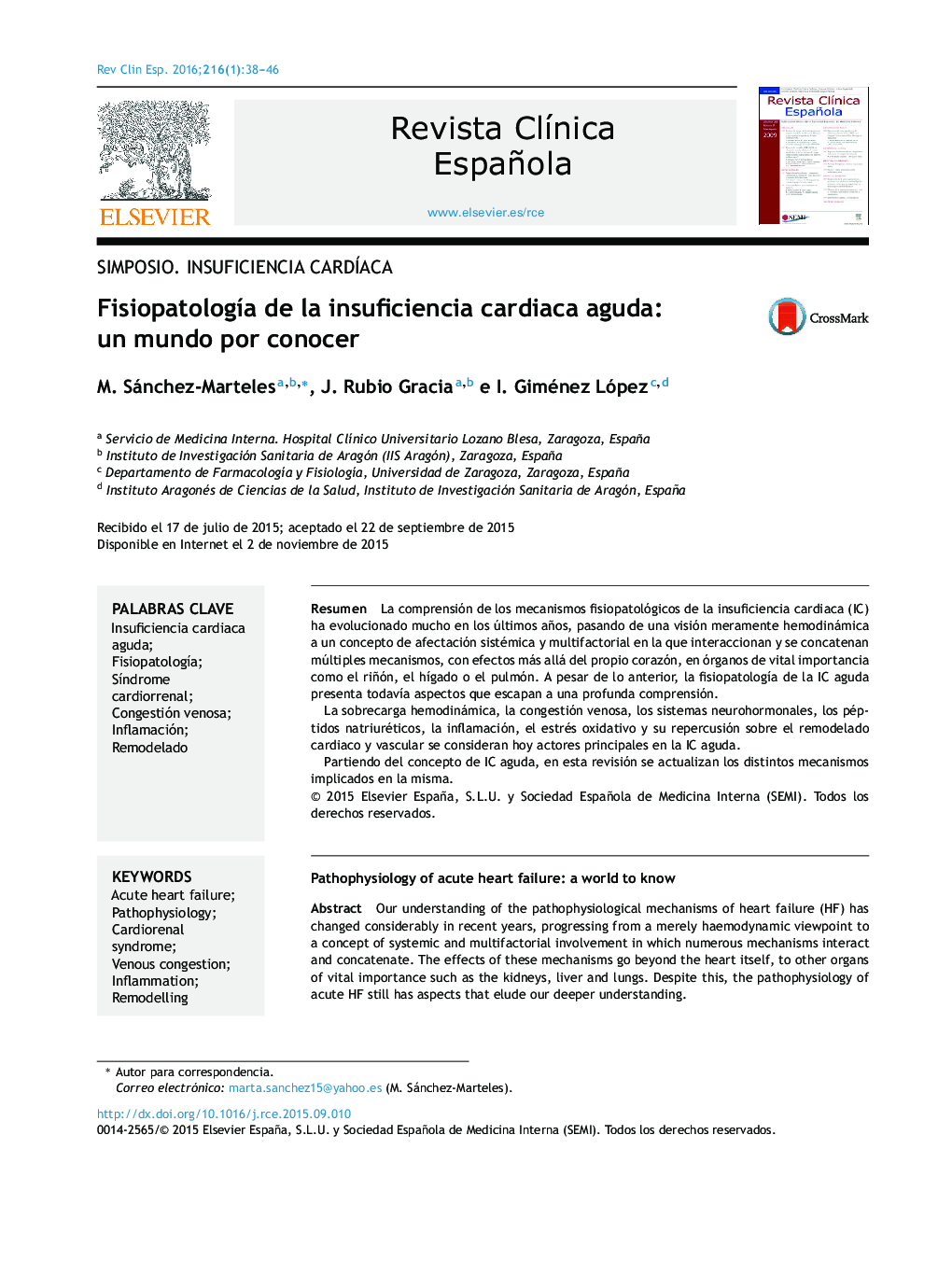| Article ID | Journal | Published Year | Pages | File Type |
|---|---|---|---|---|
| 3826943 | Revista Clínica Española | 2016 | 9 Pages |
ResumenLa comprensión de los mecanismos fisiopatológicos de la insuficiencia cardiaca (IC) ha evolucionado mucho en los últimos años, pasando de una visión meramente hemodinámica a un concepto de afectación sistémica y multifactorial en la que interaccionan y se concatenan múltiples mecanismos, con efectos más allá del propio corazón, en órganos de vital importancia como el riñón, el hígado o el pulmón. A pesar de lo anterior, la fisiopatología de la IC aguda presenta todavía aspectos que escapan a una profunda comprensión.La sobrecarga hemodinámica, la congestión venosa, los sistemas neurohormonales, los péptidos natriuréticos, la inflamación, el estrés oxidativo y su repercusión sobre el remodelado cardiaco y vascular se consideran hoy actores principales en la IC aguda.Partiendo del concepto de IC aguda, en esta revisión se actualizan los distintos mecanismos implicados en la misma.
Our understanding of the pathophysiological mechanisms of heart failure (HF) has changed considerably in recent years, progressing from a merely haemodynamic viewpoint to a concept of systemic and multifactorial involvement in which numerous mechanisms interact and concatenate. The effects of these mechanisms go beyond the heart itself, to other organs of vital importance such as the kidneys, liver and lungs. Despite this, the pathophysiology of acute HF still has aspects that elude our deeper understanding.Haemodynamic overload, venous congestion, neurohormonal systems, natriuretic peptides, inflammation, oxidative stress and its repercussion on cardiac and vascular remodelling are currently considered the main players in acute HF.Starting with the concept of acute HF, this review provides updates on the various mechanisms involved in this disease.
